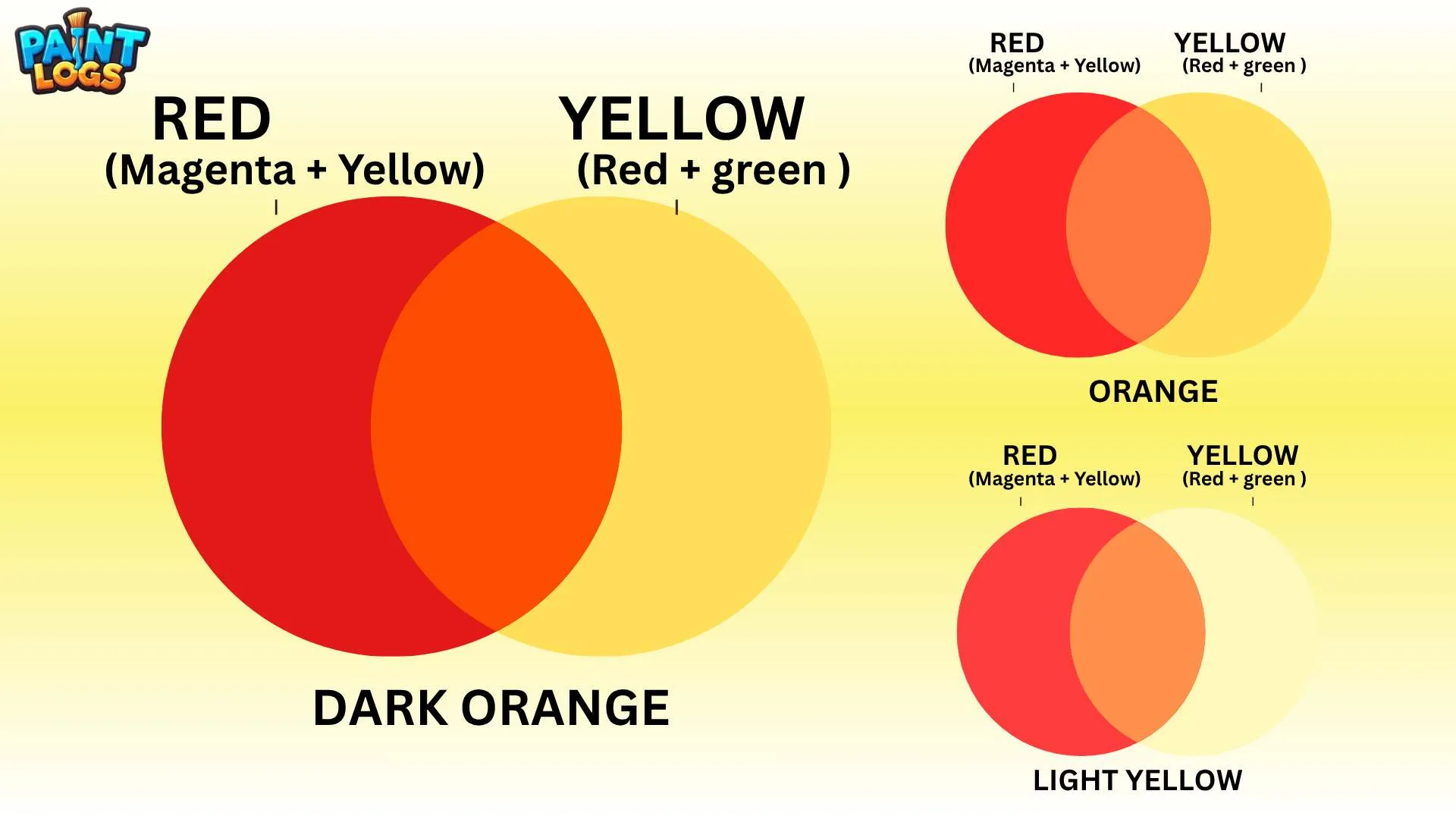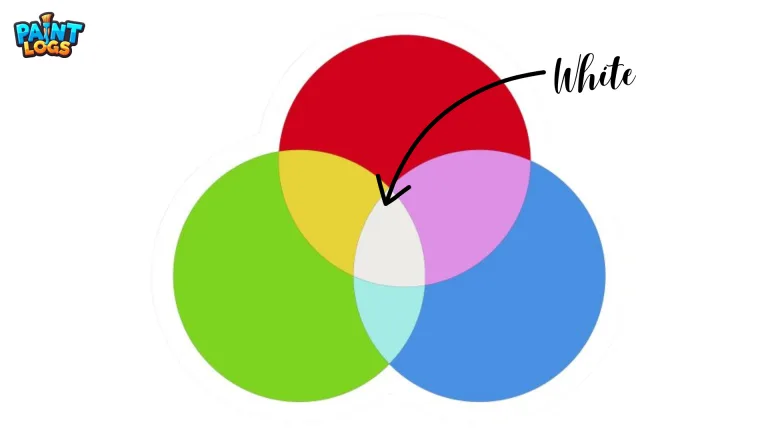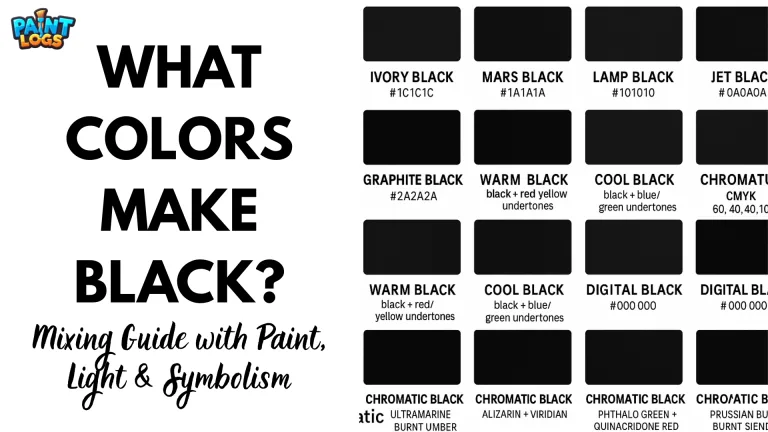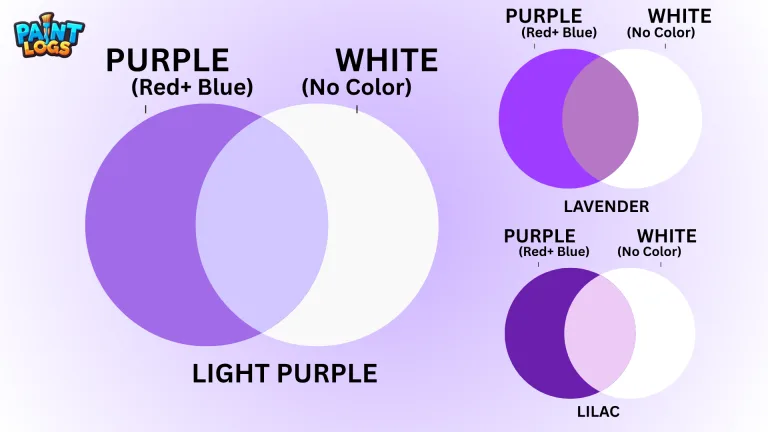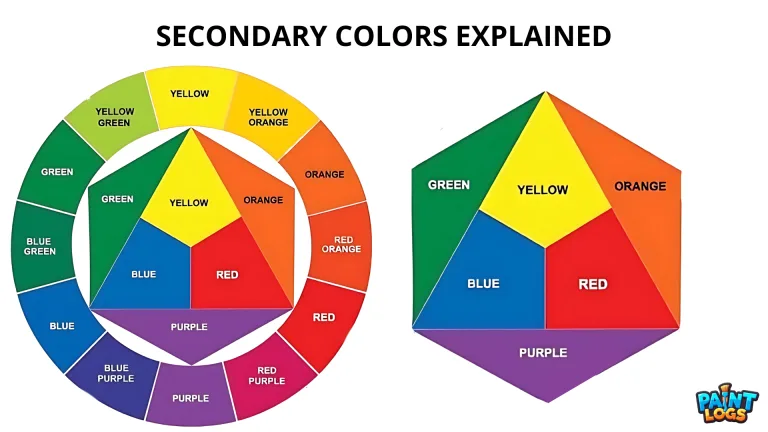Red and yellow are primary colors in the traditional RYB color model. When combined, they create a secondary color, which is orange. The exact shade of orange depends on the medium (paint, digital, or print), the specific shades of red and yellow, and their ratio in the mix.
Artists and designers often experiment with these primary colors to create tertiary colors, such as red-orange or yellow-orange. Knowing how red and yellow interact is essential for achieving the desired hue in any medium you are working with.
This guide will explore all the shades of orange you can create from red and yellow and how to use them effectively in art, design, and everyday projects.
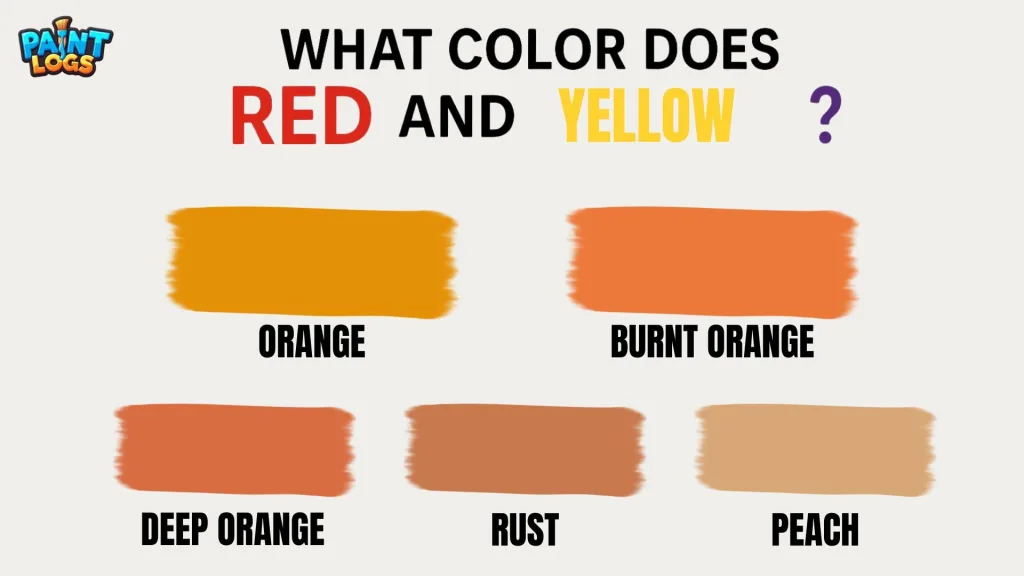
Quick Answer: What Do Red and Yellow Make When Mixed?
Red + Yellow = Orange
- Red: #FF0000
- Yellow: #FFFF00
- Orange: #FFA500
Mixing red and yellow produces orange, a secondary color formed by combining two primary colors.
- More red results in a warmer, deeper orange.
- More yellow results in a lighter, brighter orange.
- Adding white creates tints like peach, while adding black creates darker shades, giving you a wider range of tertiary colors.
This principle applies across paint, digital screens, and printing. For paint specifically, using pure red and yellow pigments ensures a clean orange, while certain reds and yellows may produce slightly muted tones.
Try our color mixer below to see how red and yellow combine into orange, and explore all the shades you can create instantly.
Color Mixing Tool — Mix Colors Online | Free Color Mixer
0 0 00deg 0% 0%What Happens When You Mix Different Shades of Red and Yellow?
When you mix different shades of red and yellow, the resulting orange can vary widely. The final color depends on the specific primary shades, their ratios, and the medium you’re using.
Examples of Shade Combinations:
- Crimson red + lemon yellow → a bright, vivid orange
- Cadmium red + golden yellow → a warmer, slightly deeper orange
- Dark red + pale yellow → a muted, earthy orange
Experimenting with different primary colors allows you to create a wide range of secondary and tertiary colors. For instance, combining red-orange with yellow can produce a rich amber tone, while adjusting the ratio of yellow-orange can lighten the color toward a sunset hue.
In painting, using pure pigments ensures the truest orange, while pre-mixed paints or digital colors may slightly shift the result due to additional undertones. This understanding of color mixing is critical when creating medium-specific palettes, whether for canvas, digital art, or print.

Red and Yellow in Paint: RYB Color Model Results
In traditional painting, red and yellow are both primary colors on the RYB color wheel. When mixed in equal parts, red and yellow make orange, a secondary color and a foundational concept in color theory.
- Equal mix: bright, standard orange
- More red: red-orange, a deeper, warmer tone
- More yellow: yellow-orange, a lighter, sunnier hue
Artists often use this knowledge to create tertiary colors by blending orange with other primary or secondary colors. For example:
- Orange + red → red-orange
- Orange + yellow → yellow-orange
Understanding the medium is also important. Acrylic, oil, or watercolor paints each interact differently, so the resulting orange may shift slightly depending on the pigment quality and type. Pre-mixed paints labeled “orange” may already lean toward a red-orange or yellow-orange, so experimenting with primary colors gives you more control over your final shade.
Digital vs. Traditional: Mixing in RGB & CMYK
When mixing red and yellow in digital formats, such as on screens, the process differs from traditional paint. Screens use the RGB color model (red, green, blue), where colors are additive—light is combined rather than pigments.
- In RGB, red is a primary color, while yellow is considered a secondary color (red + green). Mixing them creates a form of orange, though it may appear brighter or more luminous than in paint.
- In CMYK printing (cyan, magenta, yellow, black), red and yellow mix subtractively, similar to paint, producing a secondary orange suitable for print.
Knowing how primary and secondary colors interact in different mediums is crucial for artists and designers who work across multiple platforms. This ensures consistency in your tertiary colors, whether for digital art, printed designs, or painted works.

How Red + Yellow Work in Color Theory
In color theory, red and yellow are primary colors that combine to form secondary colors, with orange being the most common result. Understanding how these colors interact is key to creating harmonious designs and tertiary colors.
- Primary colors (red, yellow, blue) cannot be made by mixing other colors.
- Mixing two primary colors produces a secondary color: red + yellow = orange, blue + yellow = green, red + blue = purple.
- Combining a primary color with a secondary color creates a tertiary color: for example, red + orange = red-orange, yellow + orange = yellow-orange.
Red and yellow are also considered warm colors on the color wheel, which makes their mix vibrant and energetic. Artists and designers often use this knowledge to balance color palettes in paintings, interiors, and digital media.
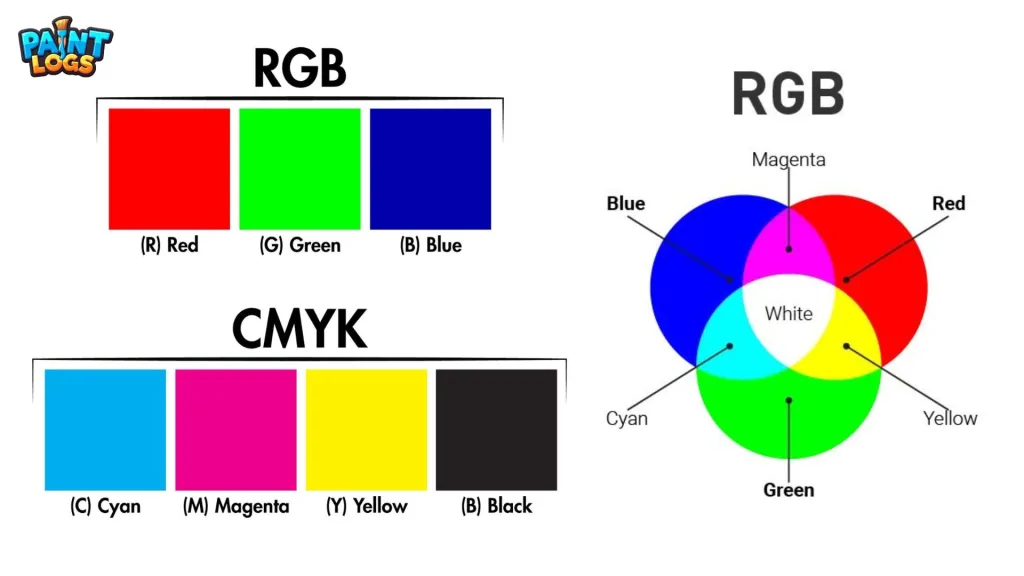
How to Make Different Shades of Orange
Once you know that red and yellow make orange, you can create a wide range of shades, tints, and tones by adjusting the ratios or adding other colors. This is essential for achieving the exact tertiary color or mood you want in your artwork or design.
Mixing Light Orange
- Add white to your orange mix for lighter tints.
- Adding a little extra yellow instead of white keeps the color bright and vibrant.
Mixing Dark Orange
- Add black sparingly to darken the orange.
- Incorporating a deeper red can also produce a warm, rich orange tone.
Tints and Tones of Orange
- Experiment with small amounts of complementary colors, like blue, to mute the brightness.
- Adjusting saturation and brightness digitally also helps achieve the desired hue.
Understanding these techniques allows you to create both secondary and tertiary colors from your original red and yellow mix, perfect for painting, print, or digital work.
| Mix / Shade | Description | Hex Code |
|---|---|---|
| Orange | Standard secondary color from equal parts red + yellow | #FFA500 |
| Red-Orange | More red than yellow, deeper warm orange | #FF4500 |
| Yellow-Orange | More yellow than red, lighter, sunnier hue | #FFB347 |
| Light Orange / Peach | Orange + white, lighter tint | #FFDAB9 |
| Dark Orange / Burnt Orange | Orange + black or deeper red, rich warm shade | #CC5500 |
| Amber | Warm orange with slightly muted tone | #FFBF00 |
| Earthy / Muted Orange | Orange + small amount of blue or complementary color | #D99058 |
For more on mixing colors to adjust shades, see What Color Does Orange and Yellow Make?

Artistic Uses of Red and Yellow Together
The combination of red and yellow is versatile in art, design, and everyday applications. Since they create orange, a vibrant secondary color, these hues can be used to draw attention, convey warmth, or create energy in a composition.
- Home décor: Red and yellow accents add warmth to living spaces, kitchens, and children’s rooms.
- Crafts and painting: Artists use this mix for autumn landscapes, sunsets, and floral designs.
- Seasonal designs: Perfect for fall, summer, or festive decorations.
- Clothing and fashion: Red and yellow garments or accessories stand out and create bold statements.
- Logos and advertising: Many brands combine red and yellow to evoke excitement, youthfulness, and positivity.
Using primary colors effectively can help you achieve a cohesive look, while mixing them into secondary and tertiary colors allows for nuanced shades that suit your artistic goals.
Internal link: For ideas on using warm tones and secondary colors in design, see Analogous Color Schemes.

How to Adjust the Mix: Add White, Black, or Other Colors
Once you’ve mixed red and yellow to create orange, you can fine-tune your secondary color to achieve different effects. Adjusting the mixture lets you explore tertiary colors and create the exact shade or tone needed for your artwork.
- Add White: Lightens the orange, creating soft tints like peach or apricot. This is useful for highlights or pastel palettes.
- Add Black: Darkens the orange, producing richer shades such as burnt orange or amber. Use sparingly to avoid overpowering the mix.
- Add Other Colors:
- Red: Intensifies warmth for red-orange hues.
- Yellow: Brightens toward yellow-orange.
- Blue: Can mute the brightness, creating earthy or brownish tones.
Experimenting with ratios helps you create both secondary and tertiary colors from your red and yellow base, providing endless possibilities for painting, crafts, or digital design.
What Happens When Red and Yellow Are Mixed with Other Colors
Mixing red and yellow with additional colors can produce a variety of secondary and tertiary colors, depending on the ratios and the type of medium used. Understanding these interactions is essential for painting, design, and digital art.
Red + Yellow + Blue → Brown
- Adding blue, the third primary color, neutralizes the mix and creates brown.
- Useful for earthy tones in landscapes or muted designs.
Red + Yellow + Orange → Deeper Orange Shades
- Combining orange with your original mix intensifies warmth, producing red-orange or amber shades.
Red + Yellow + Purple → Warm Brown or Muted Tones
- Purple added to red and yellow creates more subdued colors, useful for shadows or vintage palettes.
Red + Yellow + Green → Yellow-Orange or Olive
- Green, when mixed with red and yellow, can create yellow-orange or olive tones, depending on proportions.
Experimenting with these combinations allows you to expand your palette from primary to secondary to tertiary colors, giving more control over your creative outcomes.
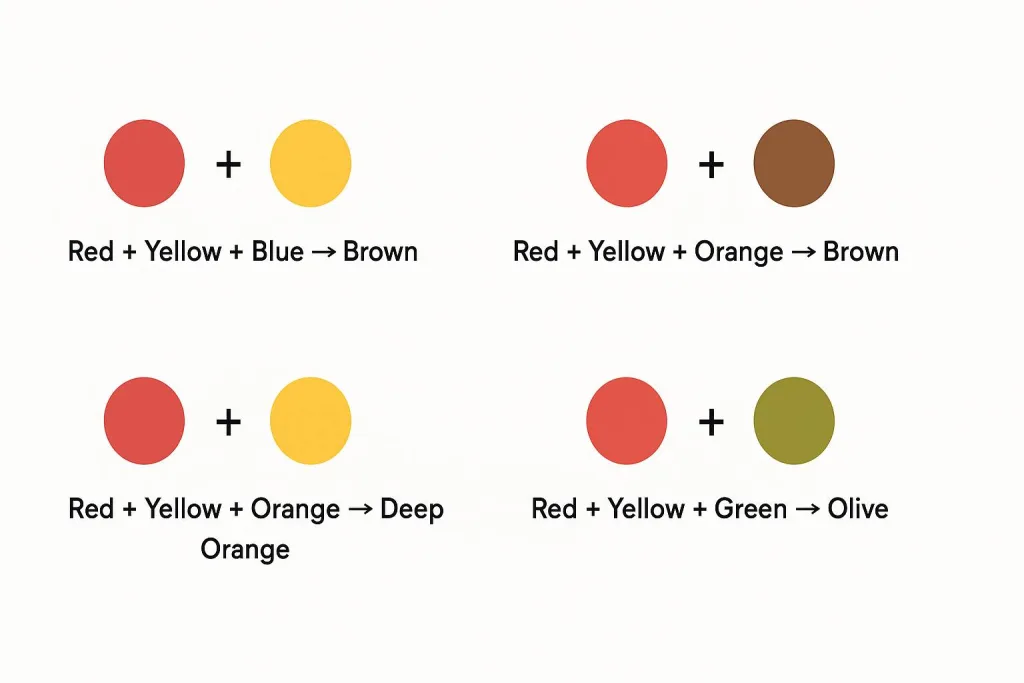
How Our Eyes Perceive Red and Yellow
When mixing red and yellow, the resulting orange is perceived consistently across different mediums because of how our eyes process color. Understanding this helps artists, designers, and educators make informed choices.
- Light and Wavelengths:
- Red light has long wavelengths, while yellow light falls in the mid-range. When combined in pigments, they reflect light that our eyes interpret as orange, a warm and vibrant color.
- Cones and Rods in the Eye:
- Cones detect color in bright conditions, while rods help perceive brightness in low light. This is why orange appears bright and consistent whether seen in paint, fabric, or digital screens.
- Medium Matters:
- Paint, ink, and light each behave differently, but red + yellow consistently produces an orange hue. This is one reason the mix is widely used in design, art, and everyday applications.
Orange Colors in Design and Everyday Life
The orange created from mixing red and yellow is widely used in design, branding, and everyday life due to its warmth, energy, and visibility. Understanding how to apply it effectively can enhance visual impact.
- Branding and Logos:
- Orange evokes enthusiasm, creativity, and attention. Brands often pair it with neutral colors like black, gray, or white to make it stand out without overwhelming viewers.
- Home and Interior Design:
- Using red + yellow orange shades for accents, such as cushions, vases, or wall art, creates warmth and energy in spaces.
- Fashion and Clothing:
- Bright oranges attract attention, while muted or darker oranges (burnt orange, amber) work well for autumnal palettes.
- Seasonal and Cultural Use:
- Orange is popular in fall, Halloween, and festive decorations, leveraging its strong visibility and association with warmth.
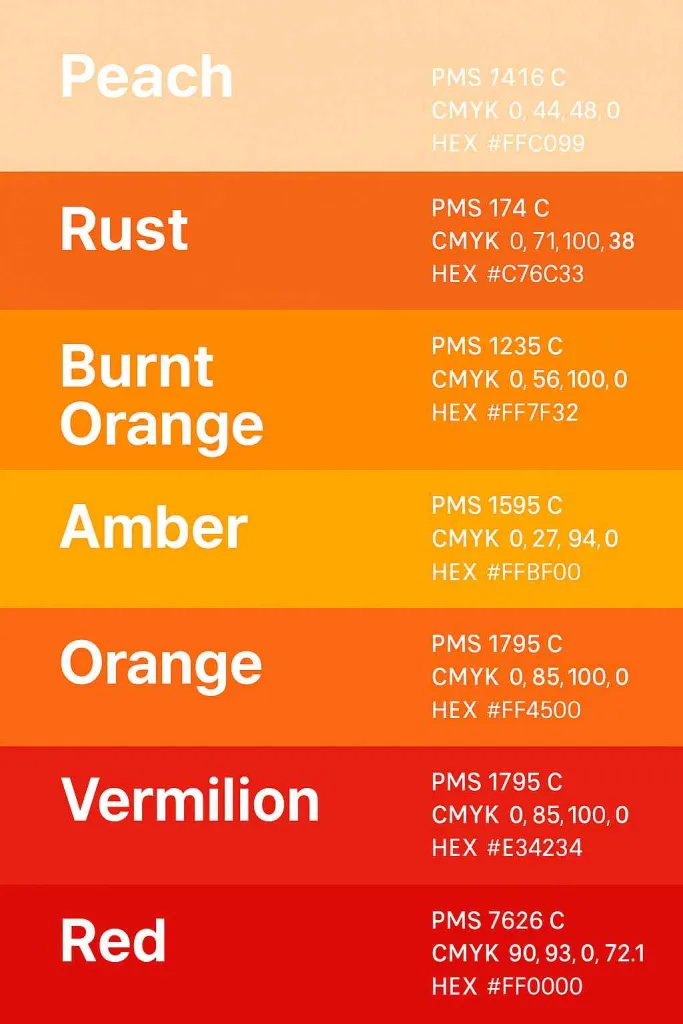
Do Red and Yellow Always Create Orange?
Yes, red and yellow always produce orange, whether you are using paint, digital media, or ink. This consistency is one of the reasons this color combination is so widely used in art, design, and education.
- Across Color Models:
- RYB (Red, Yellow, Blue): Red + yellow = orange (secondary color).
- RGB (Red, Green, Blue): Red + yellow light also produces orange, though yellow is technically a mix of red and green light.
- CMYK (Cyan, Magenta, Yellow, Black): Red + yellow inks mix to create orange as a tertiary color in printing.
- Why Other Mixes Differ:
- Some color combinations, like red + green, produce brown in paint but yellow in lights.
- Red + yellow is one of the few primary color combinations that consistently yields a warm secondary color.
- Practical Implications:
- Designers and artists can rely on this mix for secondary and tertiary color creation, ensuring predictable and vibrant results.
Conclusion: So, What Does Red and Yellow Make?
When you mix red and yellow, you get orange—a vibrant secondary color that can be adjusted into a wide range of shades, tints, and tones.
- Key Takeaways:
- The resulting orange depends on the shades of red and yellow and the ratios used.
- Adding white, black, or other colors can create tints, shades, or tertiary colors like red-orange, yellow-orange, peach, or burnt orange.
- This combination is consistent across RYB, RGB, and CMYK color models, making it reliable for both physical painting and digital design.
- Practical Tip:
- Experiment with different primary and secondary colors to create unique tertiary colors for your artwork, décor, or design projects.
To see other color mixing guides and expand your knowledge, check out What Color Does Orange and Yellow Make? and What Color Does Red and Grey Make?.
FAQs
Do red and yellow make orange?
Yes. Red and yellow are both primary colors in the RYB model, and when mixed, they create orange, a secondary color. The exact shade may vary depending on the specific red and yellow used.
Can red and yellow make brown?
Yes, but only if other colors like blue are introduced. Mixing red, yellow, and blue creates brown because adding a third primary color alters the hue.
What’s the difference between red-orange and yellow-orange?
Red-orange: More red than yellow in the mix.
Yellow-orange: More yellow than red in the mix.
Both are tertiary colors derived from the primary colors red and yellow.
Can I make peach from red and yellow?
Yes. Adding white to red and yellow produces lighter shades like peach or light orange. This is an example of creating tints from a secondary color.
Is orange a warm color?
Yes. Orange is a warm secondary color that combines the warmth of red with the brightness of yellow.
What are real-life examples of red-yellow mixes?
Autumn leaves, sunsets, fruits like oranges and peaches, and many logo designs use red + yellow orange shades.
How do primary, secondary, and tertiary colors relate to red and yellow?
Primary: Red, Yellow Secondary: Orange (from red + yellow) Tertiary: Red-orange, Yellow-orange (from mixing a primary with a secondary color)
Do red and yellow always make the same shade of orange?
Not exactly. The resulting orange depends on the shade of red and yellow, the mixing ratio, and whether you add white or black. Experimenting with ratios can produce everything from bright orange to burnt orange.
Can red and yellow be mixed digitally as well as in paint?
Yes. In digital design using RGB or CMYK, red and yellow can produce orange. However, the result is considered a tertiary color in CMYK printing, while in RGB screens it appears as orange due to additive light mixing.
Can red and yellow make shades like amber or burnt orange?
Yes. Adjusting the red-to-yellow ratio or adding a small amount of black or complementary colors can produce shades like amber, burnt orange, or deep orange tones.

